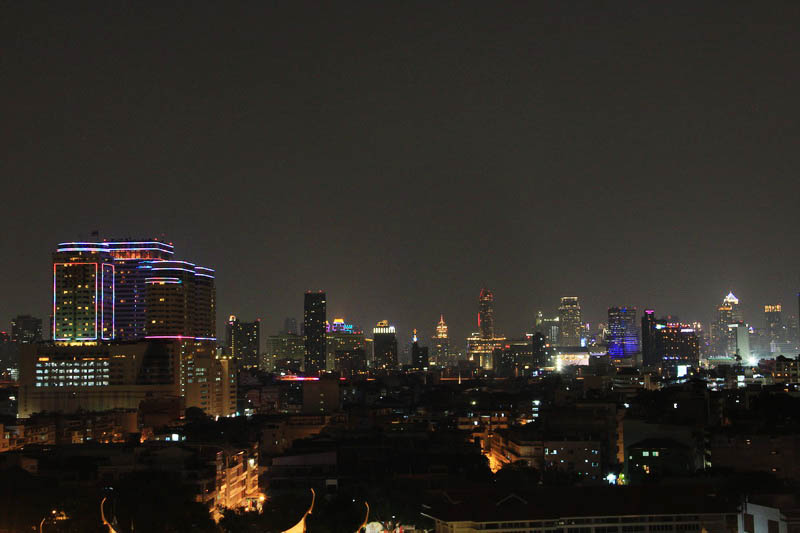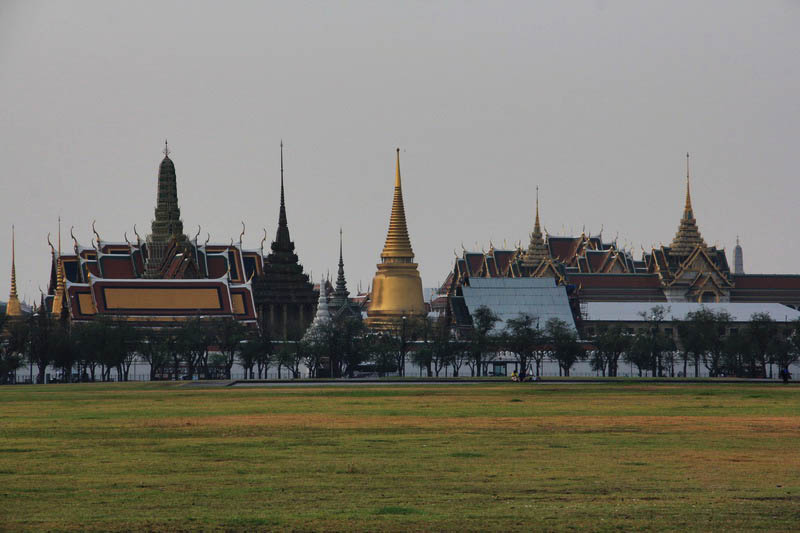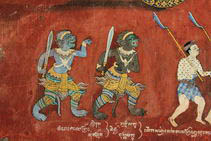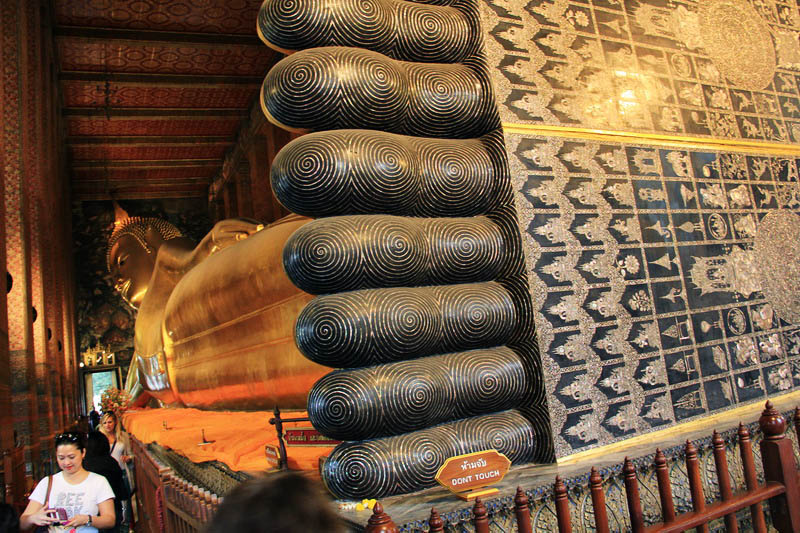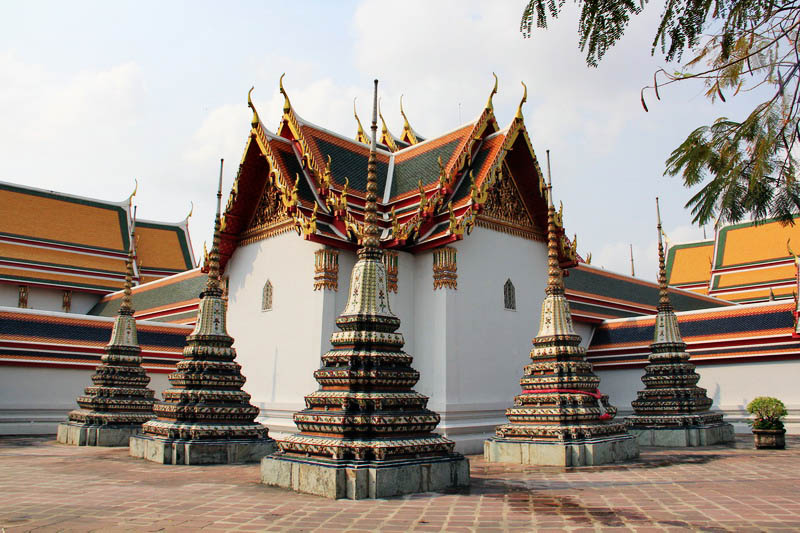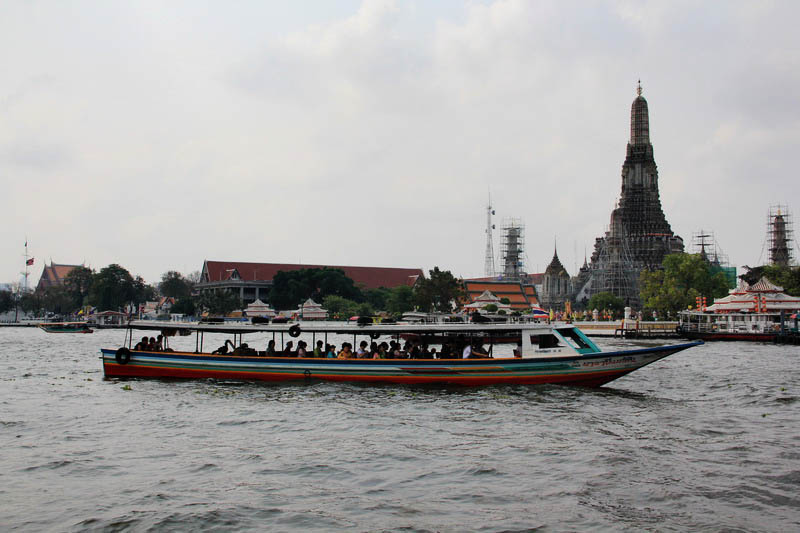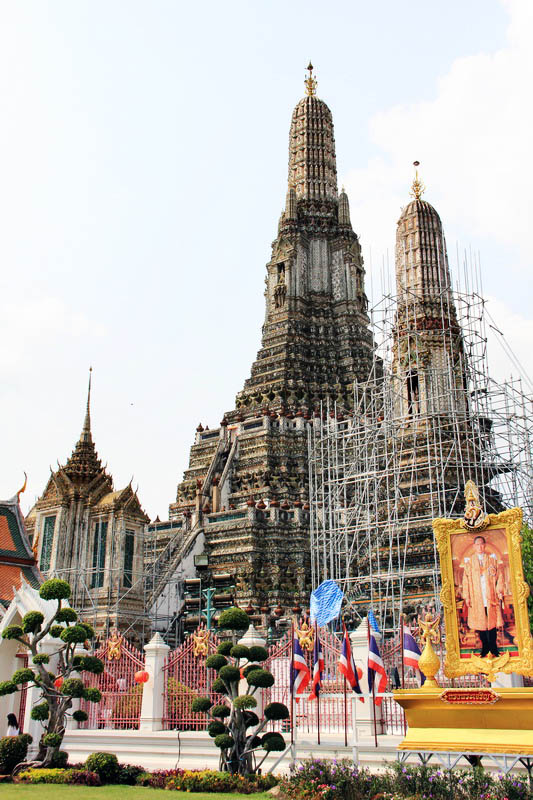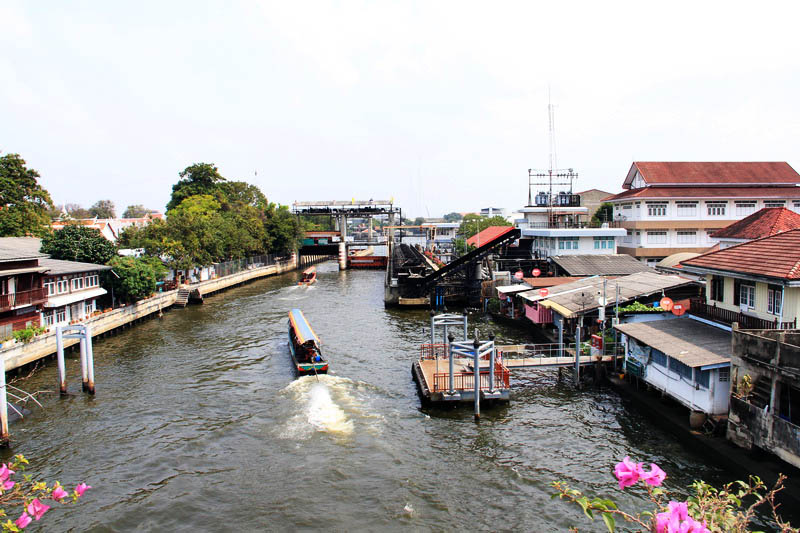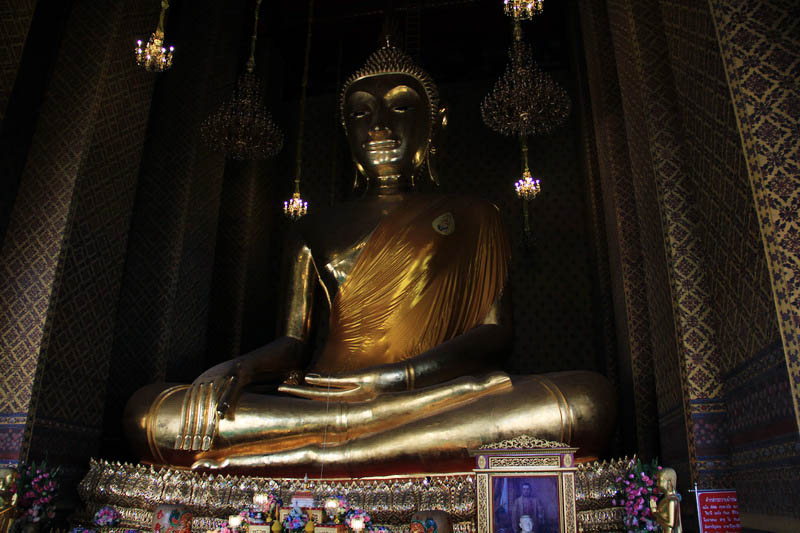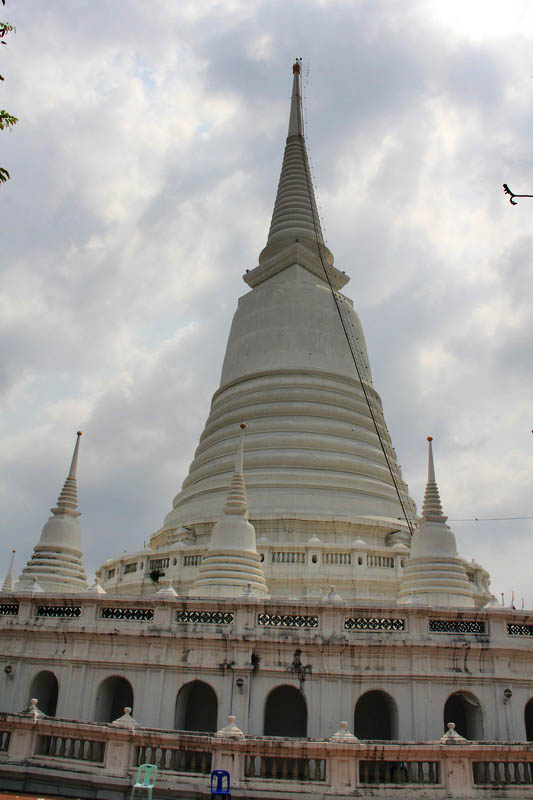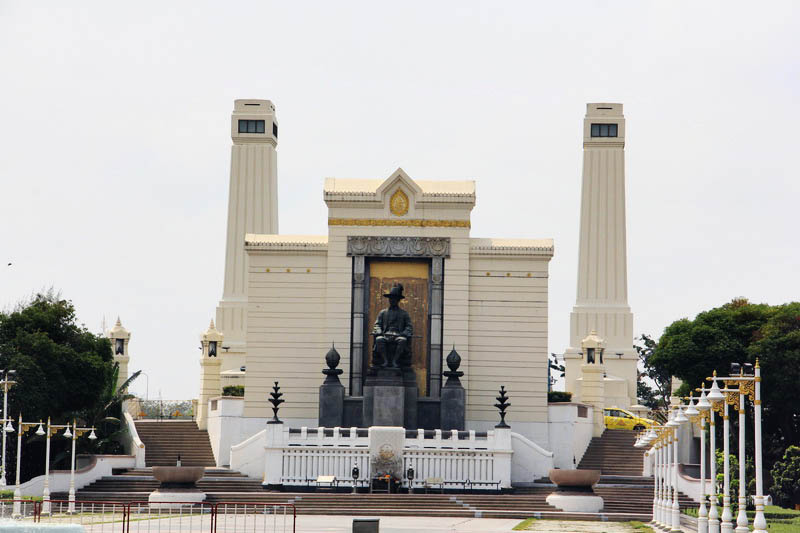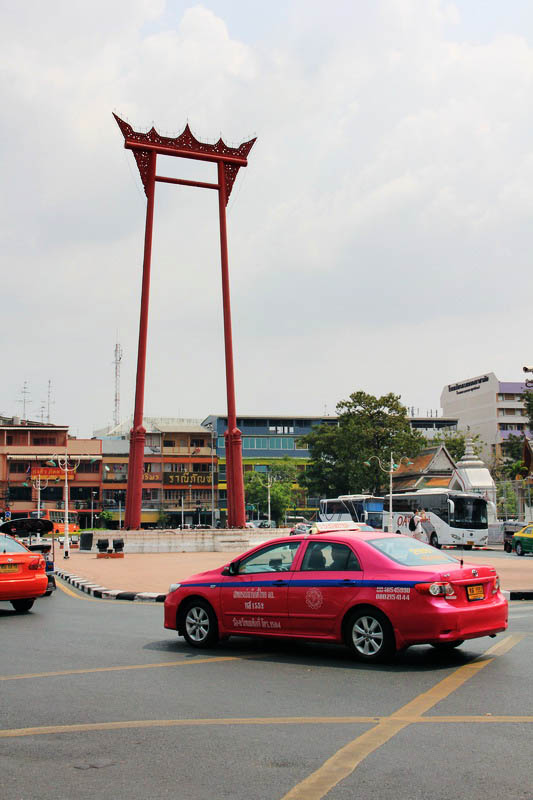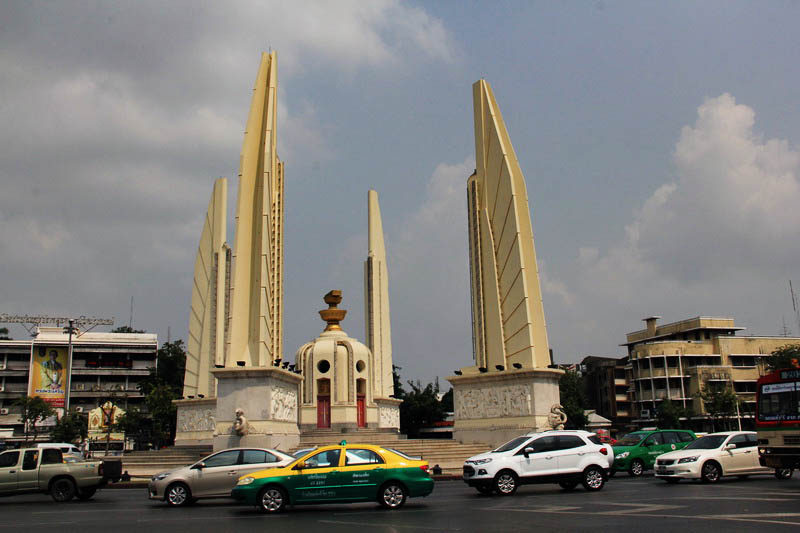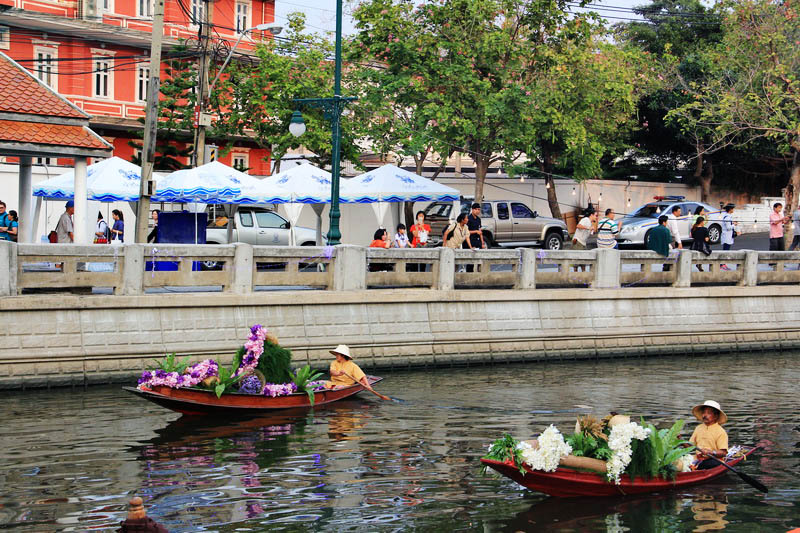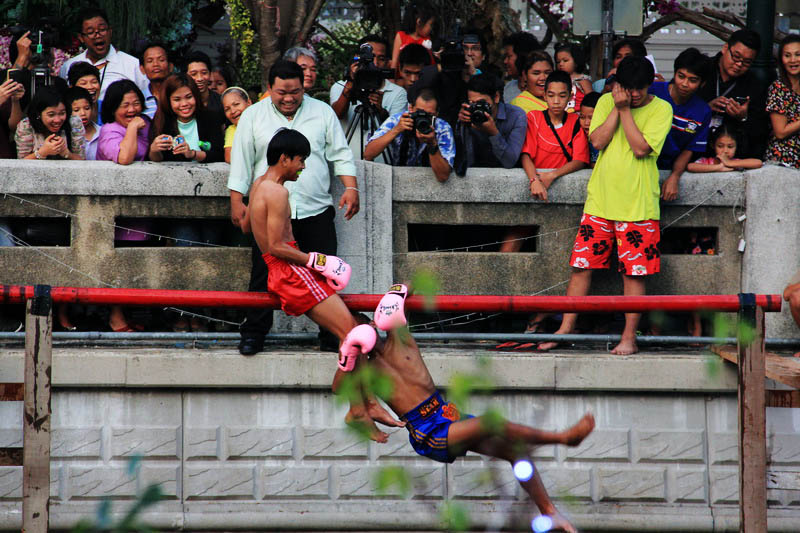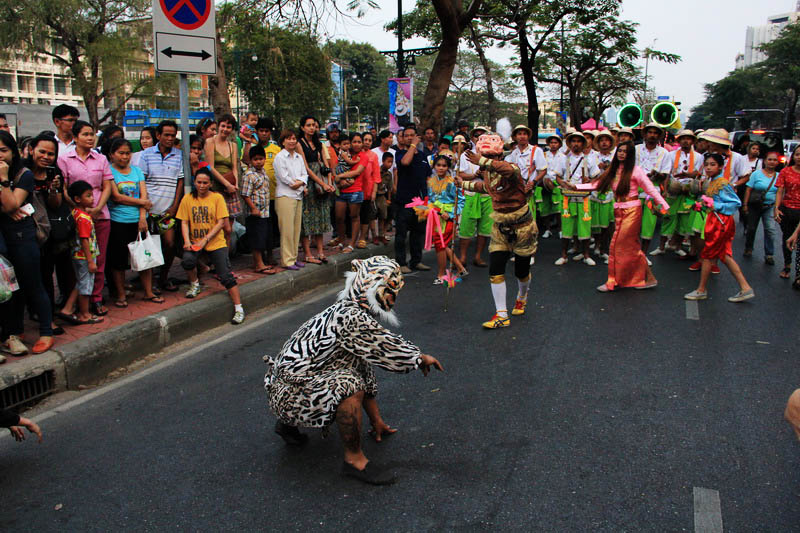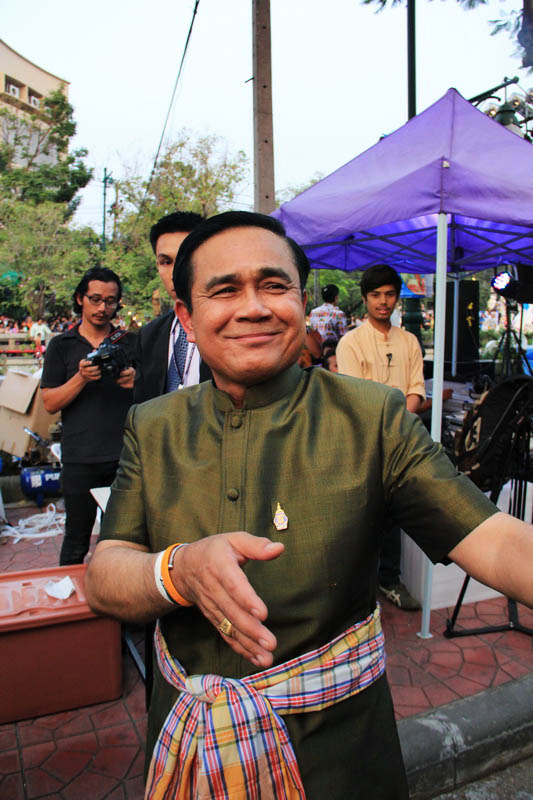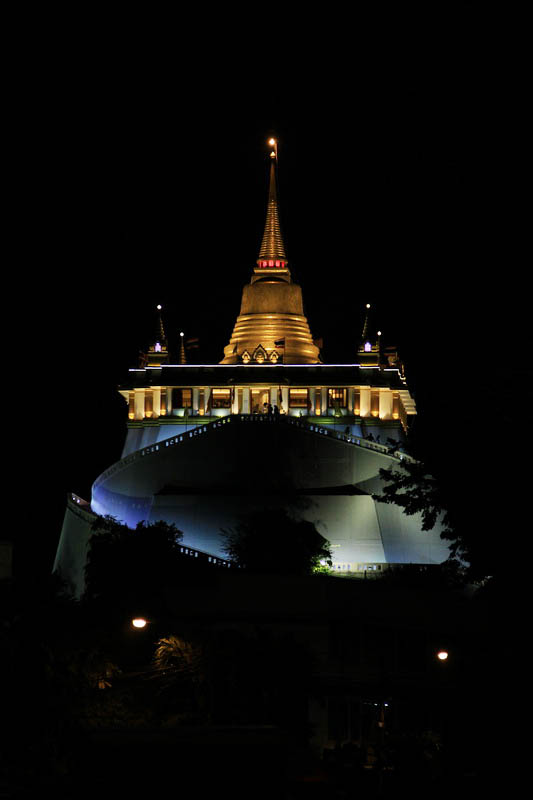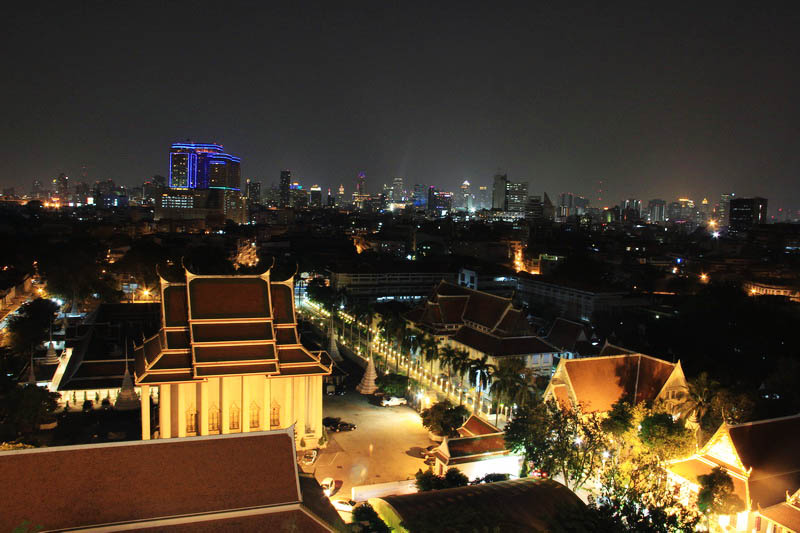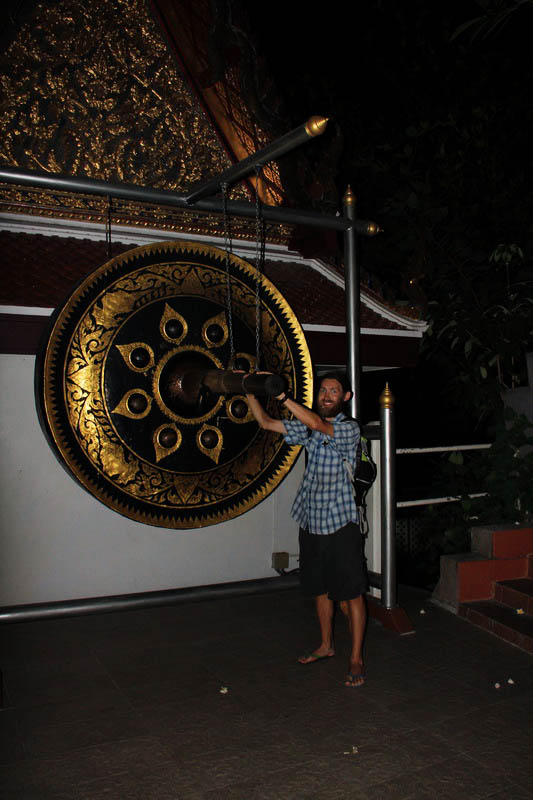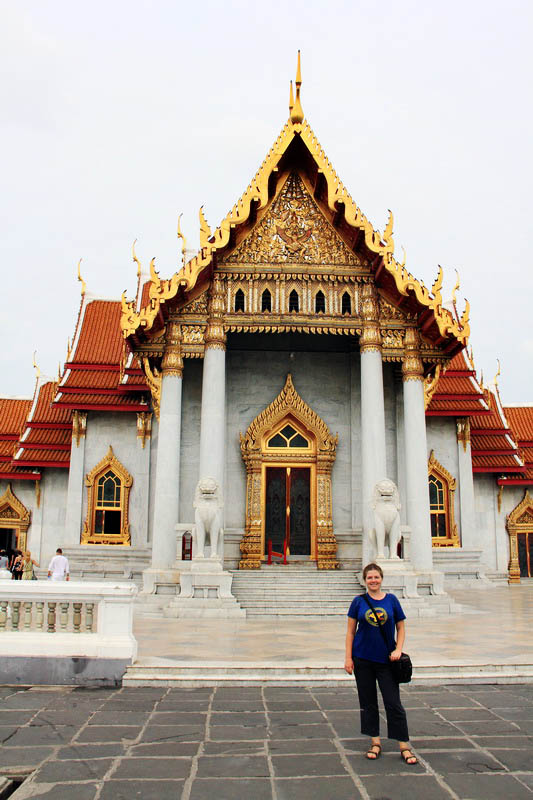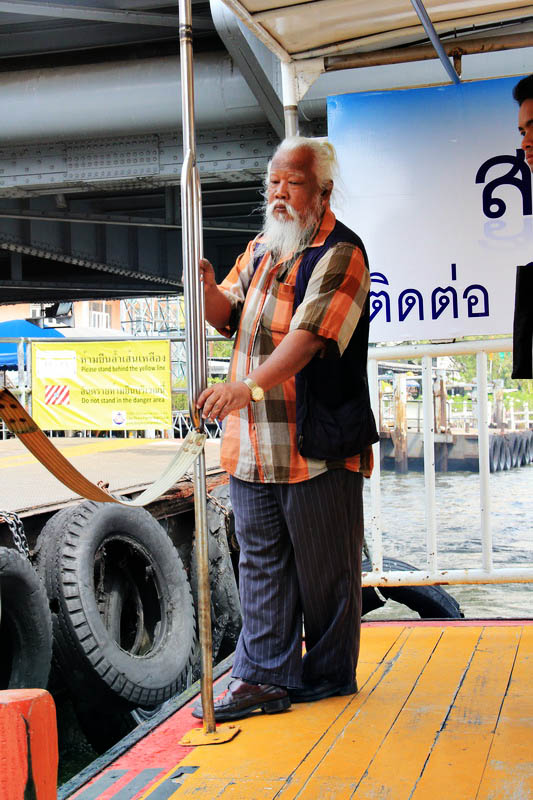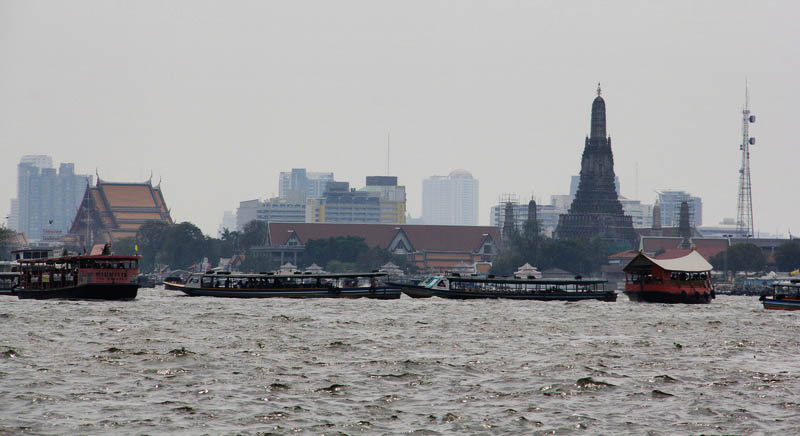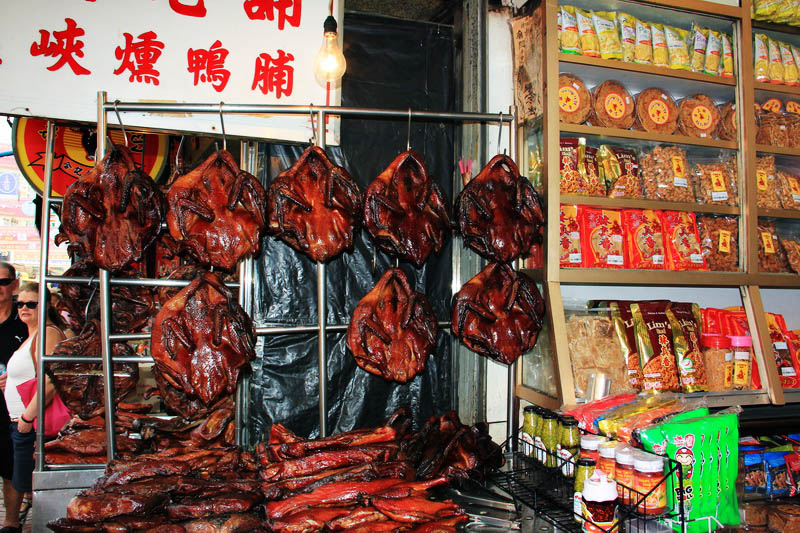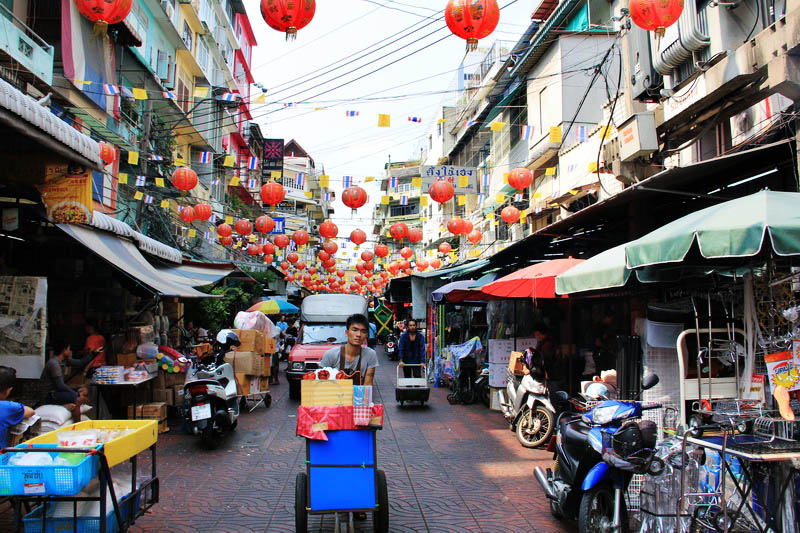We arrived in Bangkok in the evening by bus from Siem Reap. And we went to a pre-booked hotel. The next day we went for a walk in the old part of Bangkok.
We started our journey through Bangkok from a street known to many travelers — Khaosan Road. It is here, in the area called Talat Yot, and in the surrounding areas, that the doors of guesthouses and hotels are always open for people coming to Bangkok.
You can find a free Bangkok map at any travel agency.
The Taits are great fellows in the matter of helping tourists. In many places in Bangkok, and throughout the country as a whole, you can always find help and tips. If you meet the tourist information center, then feel free to come in and ask questions. They answer in English and any questions about the city, the area, attractions, transport.
By the way, for reference, in Thai the street is "Thanon", the alley is "Soi". These words are usually written before the name of the street or lane itself.
The first thing we did was go towards the royal palace.
Along the way, we saw a couple more temples. One of them is Wat Mahathat. The temple was built in the reign of King Rama I. It is the center of one of the two Buddhist universities in Thailand. The temple is the largest headquarters of monks in Thailand, and Buddhism and meditation are taught here. And there is a Vipassana center. Most of the training is conducted in Thai, but there are classes where monks teach in English. You can look into this temple — it is a whole town.
In general, a great many temples have been built in Thailand, because 94% of the population are Buddhist believers. Monks in Thailand are respected people, and every man considers it his duty to devote some time of his life to serving in a monastery or temple.
Ordinary city temples can be unremarkable, but they are always beautiful because of the architecture itself. You can go to all the temples, sit in peace and coolness, in the aroma of incense and relax from the heat.
The entrance to the Royal Palace (Grand Palace) costs 500 baht. This price also includes a visit to two places in Bangkok: the Teak Palace "Vimanmek" (Vimanmek Royal Mansoin) and the Throne Room "Ananta" (Ananta Samakhom Throne Hall). You will be able to visit them within a week from the start of the ticket validity.
Attention! The royal palace has a dress-cod. For women, these are necessarily closed shoulders and a long skirt or trousers. And for men — light trousers (shorts are not allowed). If you dress inappropriately, you can rent a shirt, skirt, light trousers. You leave 200 baht as a deposit, and on the way back you hand over your things and do not forget to pick up the money.
Yes, there are usually a lot of businessmen busily selling clothes near the entrance to the palace. Don't fall for their persuasions. Go to the official clothes rental room. :)
Also, a huge number of tourist buses arrive for the opening of the palace, with whom would you think - correctly, with the Chinese!!! There are a lot of them there.
The territory of the royal palace itself is quite large, first you get to the territory of the temples. It's very beautiful there. Bells are ringing in the wind. There are stupas, Chedis and even Angkor Wat in miniature.
Travel notes: Cambodia - Angkor Wat and not only
After visiting Malaysia, we planned to fly from Kuala Lumpur to the capital of Cambodia, Phnom Penh.
And so, upon arrival in Phnom Penh, a funny incident happened to me (Pavel), which bothe...
There is an active temple of the emerald Buddha here. You can't take pictures inside, but you can sit on the floor there (don't forget, in Buddhist temples you can't stretch your legs in the direction of the Buddha), relax and listen to yourself.
And after that, you move on to the palace itself and various related buildings.
But we got all this information from the Internet, because we squeezed 1000 baht for a visit and the crowds of Chinese only contributed to this decision
Wat Pho is located next to the Royal palace. The entrance ticket is 100 baht, the ticket price includes a small bottle of water, which can be obtained on site – a trifle, but it's nice. This is the oldest temple in Bangkok, it was built in the 16th century back in the Ayutthaya period. In 1782, Rama I began the process of rebuilding the temple. In the galleries and courtyards of the temple there are about 400 gilded Buddha statues, 95 stupas, 140 tablets with ancient knowledge of non-traditional methods of treatment. Also, here you can see the famous reclining Buddha, covered with gold leaf, reaching 45 meters in length. The temple is known for the fact that Wat Po has been a national training center for traditional and non—traditional Thai medicine, as well as the oldest center for studying the art of Thai massage, since the beginning of the construction of the temple to this day.
And since we did not go to the royal palace, we managed to see Wat Po before the arrival of the bulk of the Chinese. And the temple was almost empty, but after an hour the Chinese occupied the territory.
After visiting the above-mentioned attractions, we went to the embankment, where there is a ferry to the other side of Chaopraya.
Chaopraya is the waterway of Bangkok, and the boats that run between the north and south of the city (travel costs 13-20 baht per person) are an integral part of the Bangkok transport system.
We approach the ferry (ferry to wat Arun) — the cost of crossing to the other side is only 3 baht per person. Similar ferries operate in many places on the river in the city, where there are no bridges nearby. A few minutes of crossing and we are already on the other side of Chaopraya.
The Temple of the Dawn - Wat Arun was built in the Ayutthaya period. According to legend: in 1768, King Taksin decided to move the capital of Thailand to Thonburi, he sailed with his army along the river and saw a beautiful temple in the rays of dawn. This was Wat Arun. The jade Buddha traveler was kept here for some time, until a separate temple was built for him.
The entrance ticket costs 50 baht. However, now the temple is under reconstruction and most of it is covered with scaffolding.
They came out of the temple of the dawn from the opposite side of the embankment. And we found a road leading south (i.e. turn left).
Next, we follow to the crossing of the Chao Phraya Canal. There is also a pedestrian bridge near the dam, where locals like to fish, and, a little deeper, a car bridge. You can move along any of them.
The next temple we entered is Wat Kalaynamit. This is a very grandiose structure, built in the 19th century, during the period of active trade with the Chinese, so architectural notes of Chinese culture are present in this temple. In the most majestic building with huge columns there is a large statue of Buddha.
On the way to the Chao Phraya River, they saw a large white stupa on the territory of another temple.
After that, we went to the bridge over the river, and on the other side we went straight to a small park with a monument to King Rama I.
After walking a little more, we met another unusual monument — the Giant Swing. The swing was built entirely of teak wood in the 18th century and served as a celebration ceremony for the rice harvest in December. The ceremony itself was a folk fun, the townspeople were divided into several teams that swung on a narrow swing board, trying to get a bag of silver coins suspended at a height of 25 meters.
Often such fun ended in accidents, and therefore, at the beginning of the 20th century, the king forbade such competitions. The swing was rebuilt several times, lightning struck it, and time simply did not spare the tree.
Next, we moved in a northerly direction, and after a short time we come to the Monument of Democracy, which symbolizes kilometer zero in Bangkok. Many travelers will learn from it that they have come to their familiar area.
From here we decided to go back to the hotel and wait out the heat, there was not a cloud in the sky, and the sun was blazing incredibly.
In the late afternoon we went for a walk again, this time in the opposite direction.
Soon we reached a bridge over one of the canals. A lot of people gathered along the canal, and elegant boats with flowers and fruits sailed along the canal itself.
We decided to find out what was going on - it turned out that a floating market was opening, timed to coincide with the Chinese New Year. We were able to watch fist fights on a log above the water.
A musical staging of a hunter's battle with tigers.
And we were able to greet the Minister of Defense of Thailand himself, who attended the opening of the market!
Then we walked to the marble temple and, as it was getting dark, headed towards the hotel. But then our attention was attracted by a lighted mountain with a temple on top.It was the Temple of the Golden Mountain (Wat Saket Golden Mount). This is another unusual place — it is an active temple, many Thais come here to pray, as well as beautiful views of the surroundings of Bangkok from the height of the temple.
In this part of the city, the temple of the golden mountain is an observation deck. And also, if you are lucky with the weather, you can see the sunset from the height of this temple. The temple of the golden mountain is a very atmospheric place. Bells are ringing in the wind. The monks recite their prayers. Beauty.
The ticket offices of the temple close at 17.30 — exactly at sunset, and the cost of visiting is 20 baht. But as it turned out, after closing the ticket offices, you can go to the temple for free, which we did, but by 20:00 the minister still asked visitors to leave the temple. On the way down the mountain, we rang all the bells and tambourines that we met on the way.
After the first part of our walk, we realized that we did not want to stay in Bangkok for a long time and bought tickets to Khao Sok with a transfer to Suratani for 650 baht per person for tomorrow evening.
In the morning we had free time and leaving our luggage at the hotel, we went to wander around the city, or rather tried to get to the market, which was marked on one of the city maps. We expected to buy some fruits at the market.
There is no market at the point where it was marked on the map, but we walked towards the river and still found it in the next quarter. However, to say that there was a choice of fruits does not turn the tongue. After buying a kilogram of rice and bananas (there was nothing else sensible there), we went to the river.
We got off just at the station No. 18 of the river tram and decided to take a ride on it.
The fare cost 15 baht per person. But we drove through the entire center and got off at stop No. 1. We thought that we would also have to return by ferry, but walking smoothly towards the house, we reached Chinatown.
We had lunch in the depths of Chinatown. We ate fried salted bananas.
And now we are almost at the hotel.
The bus to Khao Sok was supposed to leave at 18:00, but according to local Asian tradition, it left 40 minutes later. Although, looking ahead, I will say that he arrived in Suratani even a little earlier than planned.
Information about the cost
- Siem Reap - Bangkok Bus - 10 dollars
- Room for two in the hotel - 300 baht
- A portion of noodles in a street snack bar - 30-50 baht
- A bottle of freshly squeezed juice - 30 baht
- Entrance to the royal palace - 500 baht
- Entrance to Wat Po Temple - 100 baht
- Entrance to the Temple of the Morning Dawn - 50 baht
- Entrance to the Marble Temple and the temple of the Golden Mountain - 20 baht each
- River tram fare - 15 baht
- Ferry across the Chao Phraya River - 3 baht
- Bangkok - Khao Sok bus - 650 baht
